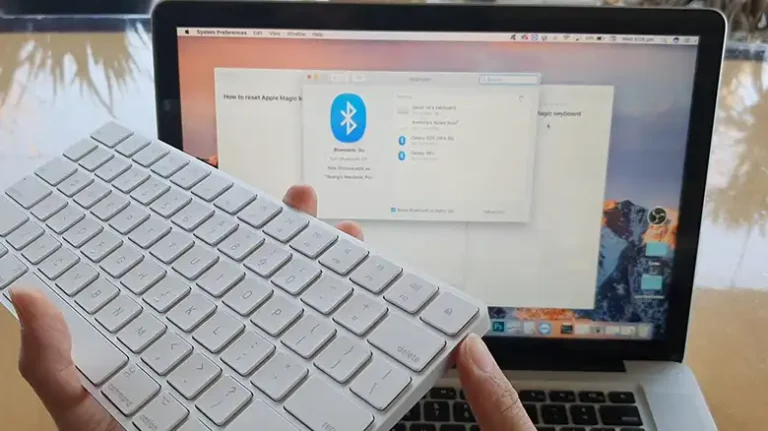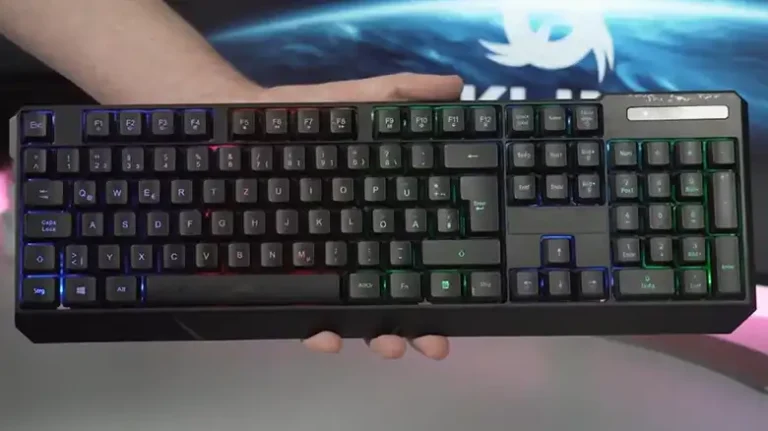BitLocker Keyboard Not Working | 5 Methods to Fix
If you’ve ever found yourself in the perplexing predicament of your keyboard refusing to cooperate when dealing with BitLocker, you’re not alone. It’s a bit like trying to navigate a maze blindfolded, but don’t worry; we’ve got the flashlight for you.
Most of the time it happens if the fast boot is enabled as it prevents the keyboard from working in the BitLocker. Simply turning it off can help you out of this mess.
In this article, we’ll shed light on the possible reasons behind your keyboard’s defiance and provide you with some nifty methods to make it work seamlessly with BitLocker. So, let’s embark on this keyboard-saving journey together.

Possible Reasons Why the Keyboard Isn’t Working in BitLocker
Before we dive into the solutions, let’s decipher the cryptic reasons behind your keyboard’s rebellion. Understanding the root cause is the first step toward solving any problem. Here are a few common culprits
Keyboard Layout Compatibility
Sometimes, the keyboard layout doesn’t align with BitLocker’s requirements, causing a communication breakdown.
Fast Boot Interference
The speedy boot process might clash with the keyboard, leading to the keyboard not working in the BitLocker issue.
Hardware Glitches
It’s always possible that a hardware hiccup is throwing a wrench into the works.
Incorrect Recovery Key
Entering the wrong recovery key can make your keyboard seem unresponsive.
Methods for Making the Keyboard Function in BitLocker
Here’s where the real action begins. We’ve got five trusty methods to bring your keyboard back into the fold. We’ll walk you through each one step-by-step.
Method 1 – Check the Keyboard Layout
- Press Windows+I to open the Settings app.
- Click Time & Language.

- Click Language.

- Click on the current default language.

- Then click on Option.
- After that click on Add a keyboard, choose the keyboard layout for you, and select it.


- Wait till the download process is done and then set the layout as default.
Method 2 – Disable Fast Boot
Disabling the fast boot will prevent the system from disabling the keyboard whenever you start your computer and then you won’t have issues while working in BitLocker. You can do it from the OS settings as well as from BIOS.
From OS Settings
- Step 1: Search for Power Options in the Windows search bar and select it from the results. After navigating, click on Additional Power Settings.


- Step 2: On the left-hand side, click on Choose what the power buttons do.

- Step 3: Next, click on Change settings that are currently unavailable.

- Step 4: Scroll down to find Turn on fast startup (recommended) and uncheck the box. This will disable Fast Boot.

- Step 5: Click the Save Changes button at the bottom of the window.
- Step 6: Restart your computer to apply the changes. Test your keyboard with BitLocker once the system reboots.
From BIOS
- Step 1: Click on the Start button in Windows, then select Restart while holding down the Shift key on your keyboard. This will restart your computer into the advanced startup options.
- Step 2: After your computer restarts, you’ll be presented with a blue screen with several options. Select Troubleshoot.
- Step 3: In the Troubleshoot menu, select Advanced options.
- Step 4: Now, click on UEFI Firmware Settings. This option might be labeled differently depending on your computer’s manufacturer, such as BIOS Setup or UEFI Setup.
- Step 5: You will receive a prompt asking if you want to restart to access UEFI/BIOS settings. Confirm and restart your computer.
- Step 6: After the restart, your computer will boot directly into the BIOS/UEFI settings. The method for accessing the BIOS/UEFI varies depending on your computer’s manufacturer, but it usually involves pressing a specific key during startup, such as F2, F12, Del, or Esc. Look for a message on your screen during boot-up that indicates which key to press to enter BIOS/UEFI.
- Step 7: Once inside the BIOS/UEFI settings, navigate to the Boot or Advanced tab using the arrow keys on your keyboard. The exact location of the Fast Boot option may differ depending on your computer’s BIOS version and manufacturer.
- Step 8: Locate the Fast Boot or Quick Boot option and set it to Disabled or Off. Use the instructions on the screen to make this change.
- Step 9: After disabling Fast Boot, save the changes you made in the BIOS/UEFI settings. This process is typically done by pressing a key like F10, and then confirming the save and exit prompt.
Method 3 – Check for Hardware Issues
- Step 1: First, unplug your keyboard from the computer and then plug it back in. Sometimes, a loose connection is the culprit.
- Step 2: If reconnecting doesn’t work, try plugging the keyboard into a different USB port on your computer. This can rule out a faulty USB port.
- Step 3: Examine your keyboard for any physical damage, such as loose or broken keys, or spilled liquids. If you find any issues, you may need to replace the keyboard.
Method 4 – Ensure Correct Recovery Key
- Step 1: If you’re not sure about your BitLocker recovery key, you can retrieve it from your Microsoft account if it’s linked. Log in to your Microsoft account and search for BitLocker recovery keys.
- Step 2: Carefully double-check that you are entering the correct recovery key. It’s a long sequence of characters, so it’s easy to make a mistake.
- Step 3: Ensure that your recovery key is stored securely, either in your Microsoft account, on a USB drive, or in a printed format. Having multiple copies is a good practice.
Exceptional Scenario – According to some users, they had to use the Function keys to input the BitLocker code and it worked for them. So, you may also give it a try and try your luck.
Method 5 – Boot from a Windows Recovery Drive
- Step 1: If you don’t have a Windows recovery drive already, you’ll need to create one. Go to Control Panel > Recovery > Create a recovery drive. Follow the on-screen instructions.

- Step 2: Insert the recovery drive into a USB port and restart your computer. You may need to change the boot order in your BIOS settings to boot from the USB drive.
- Step 3: Once the Windows Recovery Environment (WinRE) is loaded, go to Troubleshoot > Advanced options > Command Prompt.
- Step 4: In the Command Prompt, enter the command to unlock BitLocker with your recovery key.
Now, your BitLocker-protected drive should be accessible with keyboard input.
What to Do If None of the Methods Work?
If none of the aforementioned solutions help you out and if the BitLocker case is quite important for you then you can follow the following things to get your work done.
Enable the On-Screen Keyboard
To enable the on-screen keyboard, go to the Ease of Access settings in the Control Panel and select Use the computer without a mouse or keyboard. Then, check the box that says Use On-Screen Keyboard. This virtual keyboard can be used as a temporary workaround.
Replace the Keyboard
If all else fails, it may be time to replace your keyboard. Purchase a compatible keyboard and connect it to your computer.
Check with Another Keyboard
If you suspect a hardware issue with your current keyboard, borrow or purchase another keyboard to test if the problem persists.
Conclusion
In the world of BitLocker and keyboards, glitches can happen to the best of us. But with the troubleshooting methods we’ve outlined, you’ll be back to typing securely in no time. Remember, persistence is key when solving tech puzzles. If you’ve tried everything and your keyboard still refuses to cooperate, don’t hesitate to seek professional help. So, whether you’re a tech novice or a seasoned pro, now you know how to tackle BitLocker keyboard issues head-on. And hey, if you found this article helpful, don’t be shy—leave a comment below. We’d love to hear about your keyboard rescue mission!
People Also Ask – PAA
Can I use BitLocker without a keyboard?
While it’s not the ideal scenario, you can use BitLocker without a physical keyboard by enabling the on-screen keyboard.
What if I forgot my BitLocker recovery key?
Don’t panic! If you’ve forgotten your recovery key, you can retrieve it from your Microsoft account, if it’s linked, or contact your system administrator for assistance.
Can BitLocker cause keyboard driver issues?
Yes, BitLocker can sometimes interfere with keyboard drivers. Disabling Fast Boot or updating your keyboard drivers may resolve the issue.
Does BitLocker work with wireless keyboards?
Yes, BitLocker is compatible with wireless keyboards, as long as the keyboard’s signal reaches the computer during startup.
Is BitLocker available on all Windows editions?
BitLocker is available in Windows editions such as Pro and Enterprise, but not in Home editions. Make sure you have the right Windows version for BitLocker functionality.
![[Fixed] Magic Keyboard Key Stuck Down](https://keyboardhunter.com/wp-content/uploads/2023/09/magic-keyboard-key-stuck-down-768x431.webp)


![[Explained] How to Turn on 2.4g Wireless Keyboard?](https://keyboardhunter.com/wp-content/uploads/2023/10/How-to-Turn-on-2.4g-Wireless-Keyboard-768x431.webp)

